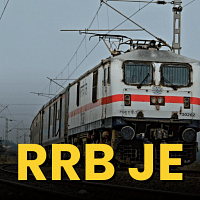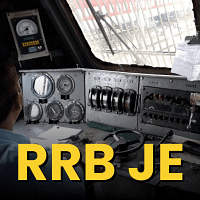Railways Exam > Railways Questions > The simultaneous transmission of data to a n...
Start Learning for Free
The simultaneous transmission of data to a number of stations is known as:
- a)Broadcast
- b)Band width
- c)Aloha
- d)Analog transmission
Correct answer is option 'A'. Can you explain this answer?
| FREE This question is part of | Download PDF Attempt this Test |
Verified Answer
The simultaneous transmission of data to a number of stations is know...
- Broadcasting is a method of transferring a message to all recipients simultaneously.
- Bandwidth is the amount of data that can be transmitted in a fixed amount of time.
- Aloha refers to simple communications scheme in which each source (transmitter) in a network sends data whenever there is a frame to send
- Analog transmission is a transmission method of conveying information using a continuous signal which varies in amplitude, phase, or some other property in proportion to that information
Most Upvoted Answer
The simultaneous transmission of data to a number of stations is know...
Simultaneous transmission of data to a number of stations
The simultaneous transmission of data to a number of stations refers to the process of sending information or data to multiple destinations at the same time. This can be achieved through various methods and technologies.
a) Broadcast
Broadcast is the correct answer in this case. It is a method of transmitting data or information from one source to multiple destinations simultaneously. In a broadcast transmission, the data is sent out to all stations or devices on a network, regardless of whether they are intended recipients or not. This type of transmission is commonly used in radio and television broadcasting, where a signal is broadcasted over a wide area and received by multiple devices or stations. In the context of data networks, broadcast transmission is utilized to send data to all devices on a local network segment.
b) Bandwidth
Bandwidth refers to the capacity or speed at which data can be transmitted over a network. It is measured in bits per second (bps) and determines how much data can be transferred within a given time frame. While bandwidth is an important factor in determining the efficiency and speed of data transmission, it does not specifically refer to the simultaneous transmission of data to multiple stations.
c) Aloha
Aloha is a network protocol developed at the University of Hawaii in the 1970s. It is a random access protocol that allows multiple stations to share a common communication channel. However, Aloha does not involve the simultaneous transmission of data to multiple stations. Instead, it focuses on managing and coordinating access to a shared channel to avoid collisions and ensure efficient communication.
d) Analog transmission
Analog transmission refers to the method of transmitting data or signals in continuous waveforms. It represents information as variations in voltage, current, or frequency. While analog transmission can be used to transmit data to multiple stations, it does not specifically refer to the simultaneous transmission of data to multiple stations. Analog transmission can be contrasted with digital transmission, where data is represented as discrete binary values.
In conclusion, the simultaneous transmission of data to a number of stations is known as broadcast. Broadcasting involves sending data to multiple destinations or devices at the same time, regardless of whether they are intended recipients or not. This is commonly used in broadcasting networks and local area networks to efficiently distribute data to multiple stations.
The simultaneous transmission of data to a number of stations refers to the process of sending information or data to multiple destinations at the same time. This can be achieved through various methods and technologies.
a) Broadcast
Broadcast is the correct answer in this case. It is a method of transmitting data or information from one source to multiple destinations simultaneously. In a broadcast transmission, the data is sent out to all stations or devices on a network, regardless of whether they are intended recipients or not. This type of transmission is commonly used in radio and television broadcasting, where a signal is broadcasted over a wide area and received by multiple devices or stations. In the context of data networks, broadcast transmission is utilized to send data to all devices on a local network segment.
b) Bandwidth
Bandwidth refers to the capacity or speed at which data can be transmitted over a network. It is measured in bits per second (bps) and determines how much data can be transferred within a given time frame. While bandwidth is an important factor in determining the efficiency and speed of data transmission, it does not specifically refer to the simultaneous transmission of data to multiple stations.
c) Aloha
Aloha is a network protocol developed at the University of Hawaii in the 1970s. It is a random access protocol that allows multiple stations to share a common communication channel. However, Aloha does not involve the simultaneous transmission of data to multiple stations. Instead, it focuses on managing and coordinating access to a shared channel to avoid collisions and ensure efficient communication.
d) Analog transmission
Analog transmission refers to the method of transmitting data or signals in continuous waveforms. It represents information as variations in voltage, current, or frequency. While analog transmission can be used to transmit data to multiple stations, it does not specifically refer to the simultaneous transmission of data to multiple stations. Analog transmission can be contrasted with digital transmission, where data is represented as discrete binary values.
In conclusion, the simultaneous transmission of data to a number of stations is known as broadcast. Broadcasting involves sending data to multiple destinations or devices at the same time, regardless of whether they are intended recipients or not. This is commonly used in broadcasting networks and local area networks to efficiently distribute data to multiple stations.
Attention Railways Students!
To make sure you are not studying endlessly, EduRev has designed Railways study material, with Structured Courses, Videos, & Test Series. Plus get personalized analysis, doubt solving and improvement plans to achieve a great score in Railways.

|
Explore Courses for Railways exam
|

|
Similar Railways Doubts
The simultaneous transmission of data to a number of stations is known as:a)Broadcastb)Band widthc)Alohad)Analog transmissionCorrect answer is option 'A'. Can you explain this answer?
Question Description
The simultaneous transmission of data to a number of stations is known as:a)Broadcastb)Band widthc)Alohad)Analog transmissionCorrect answer is option 'A'. Can you explain this answer? for Railways 2024 is part of Railways preparation. The Question and answers have been prepared according to the Railways exam syllabus. Information about The simultaneous transmission of data to a number of stations is known as:a)Broadcastb)Band widthc)Alohad)Analog transmissionCorrect answer is option 'A'. Can you explain this answer? covers all topics & solutions for Railways 2024 Exam. Find important definitions, questions, meanings, examples, exercises and tests below for The simultaneous transmission of data to a number of stations is known as:a)Broadcastb)Band widthc)Alohad)Analog transmissionCorrect answer is option 'A'. Can you explain this answer?.
The simultaneous transmission of data to a number of stations is known as:a)Broadcastb)Band widthc)Alohad)Analog transmissionCorrect answer is option 'A'. Can you explain this answer? for Railways 2024 is part of Railways preparation. The Question and answers have been prepared according to the Railways exam syllabus. Information about The simultaneous transmission of data to a number of stations is known as:a)Broadcastb)Band widthc)Alohad)Analog transmissionCorrect answer is option 'A'. Can you explain this answer? covers all topics & solutions for Railways 2024 Exam. Find important definitions, questions, meanings, examples, exercises and tests below for The simultaneous transmission of data to a number of stations is known as:a)Broadcastb)Band widthc)Alohad)Analog transmissionCorrect answer is option 'A'. Can you explain this answer?.
Solutions for The simultaneous transmission of data to a number of stations is known as:a)Broadcastb)Band widthc)Alohad)Analog transmissionCorrect answer is option 'A'. Can you explain this answer? in English & in Hindi are available as part of our courses for Railways.
Download more important topics, notes, lectures and mock test series for Railways Exam by signing up for free.
Here you can find the meaning of The simultaneous transmission of data to a number of stations is known as:a)Broadcastb)Band widthc)Alohad)Analog transmissionCorrect answer is option 'A'. Can you explain this answer? defined & explained in the simplest way possible. Besides giving the explanation of
The simultaneous transmission of data to a number of stations is known as:a)Broadcastb)Band widthc)Alohad)Analog transmissionCorrect answer is option 'A'. Can you explain this answer?, a detailed solution for The simultaneous transmission of data to a number of stations is known as:a)Broadcastb)Band widthc)Alohad)Analog transmissionCorrect answer is option 'A'. Can you explain this answer? has been provided alongside types of The simultaneous transmission of data to a number of stations is known as:a)Broadcastb)Band widthc)Alohad)Analog transmissionCorrect answer is option 'A'. Can you explain this answer? theory, EduRev gives you an
ample number of questions to practice The simultaneous transmission of data to a number of stations is known as:a)Broadcastb)Band widthc)Alohad)Analog transmissionCorrect answer is option 'A'. Can you explain this answer? tests, examples and also practice Railways tests.

|
Explore Courses for Railways exam
|

|
Suggested Free Tests
Signup for Free!
Signup to see your scores go up within 7 days! Learn & Practice with 1000+ FREE Notes, Videos & Tests.
























